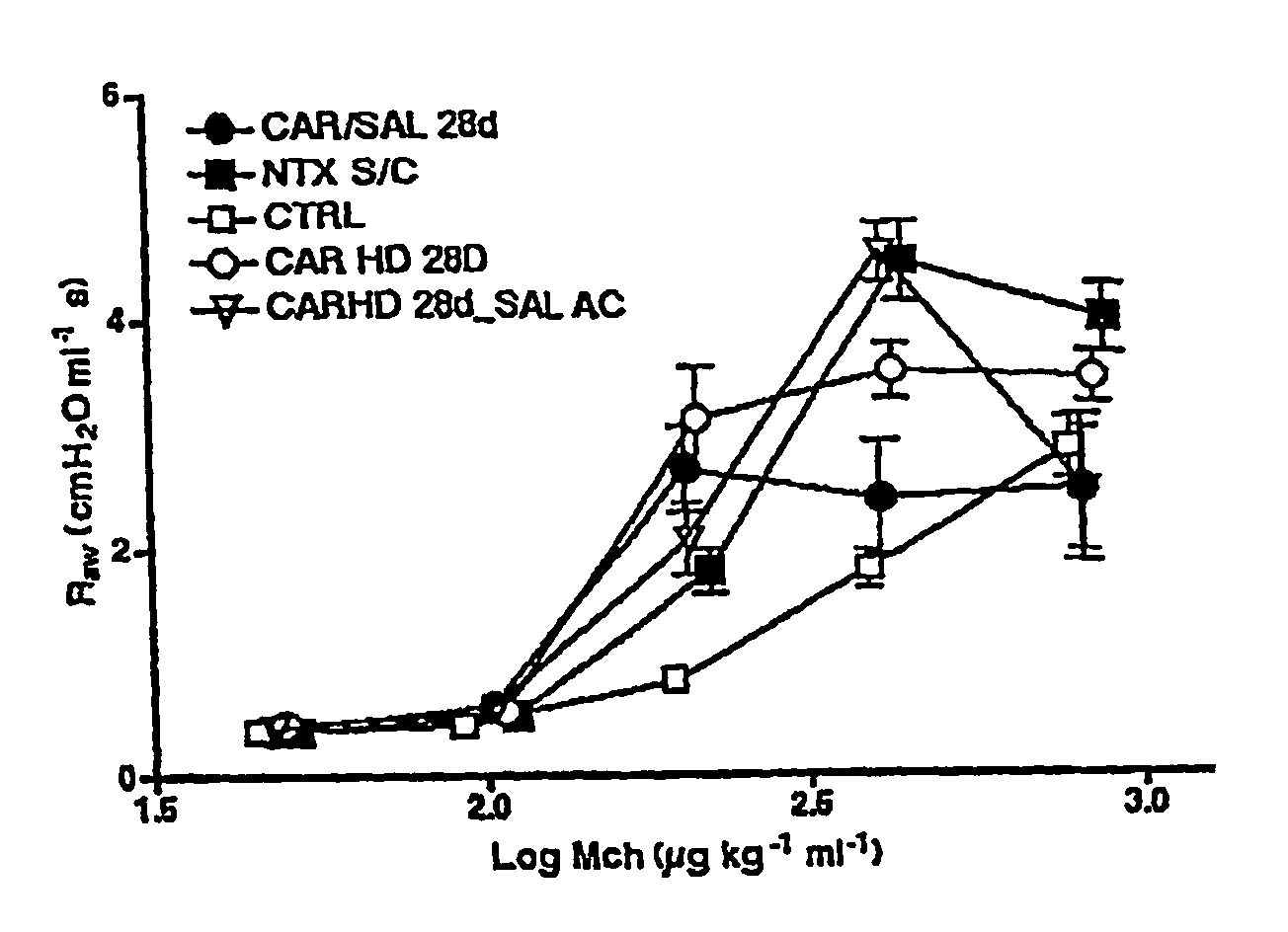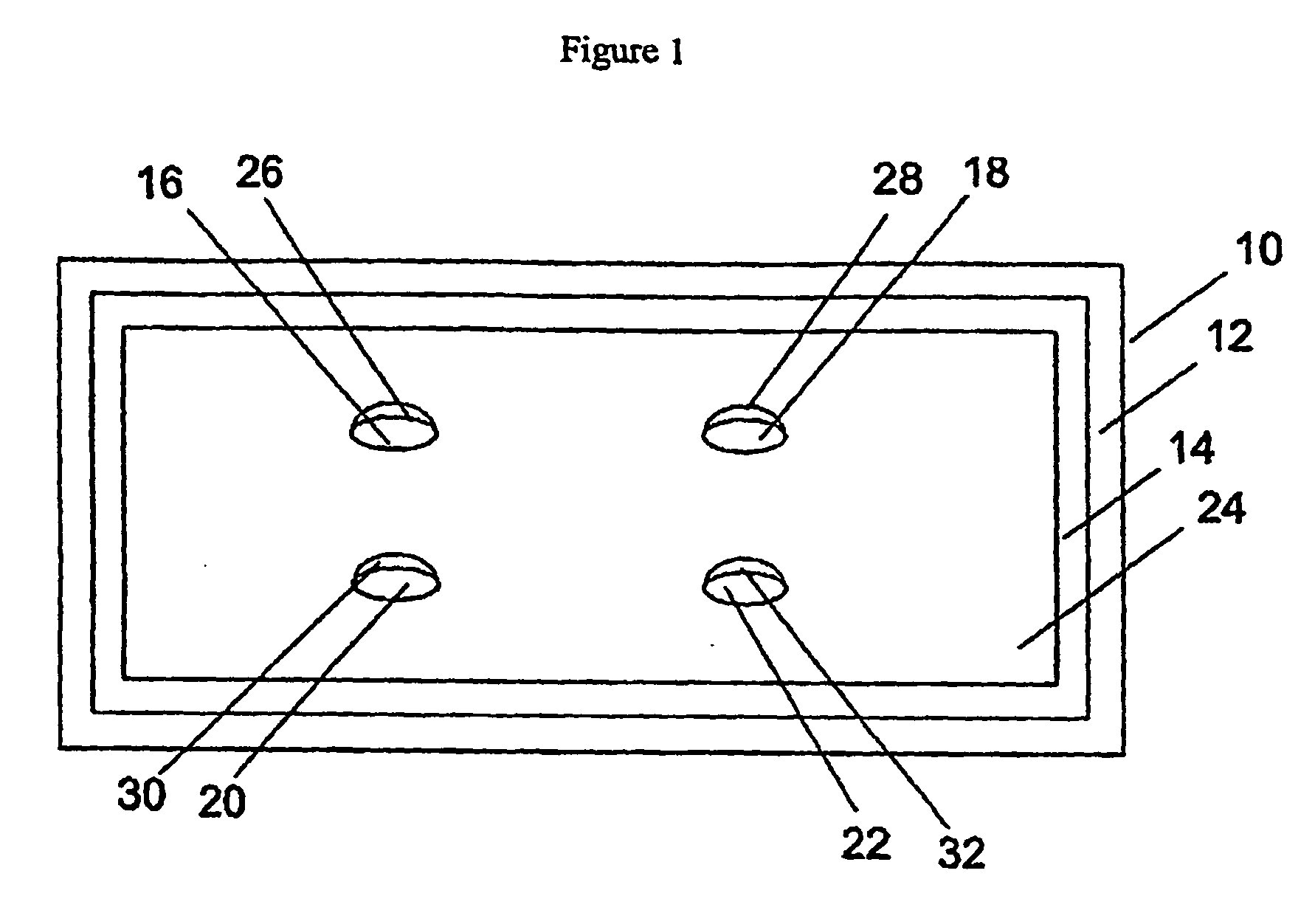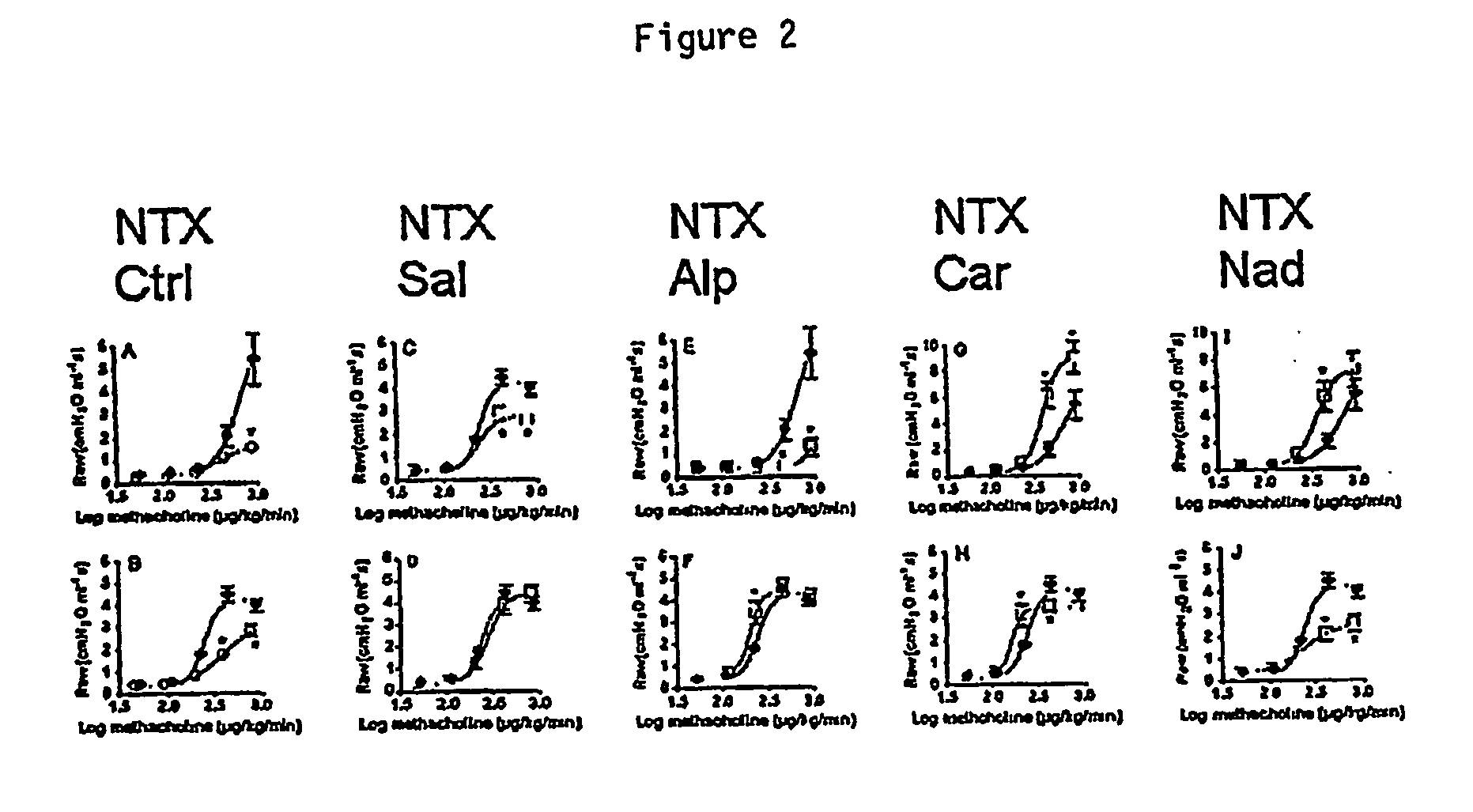Methods for Treating Diseases and Conditions with Inverse Agonists and for Screening for Agents Acting as Inverse Agonists
a technology of inverse agonists and diseases, applied in the field of inverse agonists for g protein coupled receptors, can solve the problems of limiting the effectiveness of conventional treatment, desensitizing and depression of receptor signaling, and limiting the treatment effect over time, so as to prevent the population decrease of gpcrs
- Summary
- Abstract
- Description
- Claims
- Application Information
AI Technical Summary
Benefits of technology
Problems solved by technology
Method used
Image
Examples
example 1
Airway Resistance Reduction by Chronic Administration of β-Adrenergic Inverse Agonists
Methods
[0239] Balb / cJ mice aged 6 weeks (Jackson Animal Laboratory, Bar Harbor, Maine) were housed under specific pathogen-free conditions and fed a chicken ovalbumin-free diet. The Animal Research Ethics Boards of both the University of Houston and the Baylor College of Medicine approved all experiments reported here. The effects of administration of the non-selective β-adrenergic inverse agonists carvedilol (GlaxoSmithKline, King of Prussia, Pa.) and nadolol (Sigma Chemical, St. Louis, Mo.) and of salbutamol (Sigma Chemical, St. Louis, Mo.), a β2-adrenergic partial agonist, were examined in a murine model that exhibited cardinal features of human asthma, such as pulmonary eosinophilic inflammation, airway hyperresponsiveness, and heterogenous airway narrowing. The results obtained in drug-treated animals were compared with those obtained in vehicle-treated counterparts (controls) in experiment...
example 2
Chronic Inverse Agonist Treatment Increases β-Adrenergic Receptor Numbers as Measured by Radioligand Binding
[0252]β2-adrenergic receptor numbers were measured in asthmatic mice as follows. Asthmatic mice (ovalbumin-challenged) were treated as follows: Ctrl, no drug treatment with methacholine challenge; salbutamol, a short-acting β2 agonist; carvedilol, a β1, β2 non-selective inverse agonist with α1-adrenergic antagonist activity; nadolol, a highly specific, hydrophilic β1, β2 non-selective inverse agonist; and alprenolol, a β-adrenergic antagonist. Drug treatments were either a single treatment 15 minutes prior to methacholine challenge or ongoing for 28 days (salbutamol was delivered continuously via a subcutaneous osmotic minipump and alprenolol, carvedilol, and nadolol were in animal chow). Mice were sacrificed and lung membranes were isolated as follows. Frozen lung tissue was homogenized in an ice-cold buffer containing 0.32 M sucrose and 25 mM Tris (pH 7.4) using a polytron ...
example 3
Effect of Combination of Carvedilol and Salbutamol on Airway Hyperresponsiveness
[0256] The effect of combination therapy with carvedilol and salbutamol was compared to monotherapy with carvedilol alone on airway hyperresponsiveness in asthmatic mice.
[0257] Mice (Balb / cJ) aged 6 weeks were housed under specific pathogen-free conditions and fed a chicken ovalbumin-free diet. Mice were systemically sensitized with ovalbumin adsorbed to aluminum hydroxide. Mice were treated as follows: CAR / SAL 28D=for 28 days mice (n=6-12) were administered carvedilol (2400 ppm in animal chow) and salbutamol (subcutaneous delivery of 0.5 mg / kg / day in an Alzet #2400 osmotic minipump); NTX S / C=mice (n=6-12) no drug treatment for 28 days; CTRL=mice (n=6-12) no drug treatment for 28 days, not subsequently challenged; CARHD 28D=for 28 days mice (n=6-12) were administered carvedilol only (2400 ppm in animal chow); CARHD 28D SAL AC=for 28 days mice (n=6-12) were administered carvedilol (2400 ppm in animal ch...
PUM
| Property | Measurement | Unit |
|---|---|---|
| frequencies | aaaaa | aaaaa |
| pH | aaaaa | aaaaa |
| volume | aaaaa | aaaaa |
Abstract
Description
Claims
Application Information
 Login to View More
Login to View More - R&D
- Intellectual Property
- Life Sciences
- Materials
- Tech Scout
- Unparalleled Data Quality
- Higher Quality Content
- 60% Fewer Hallucinations
Browse by: Latest US Patents, China's latest patents, Technical Efficacy Thesaurus, Application Domain, Technology Topic, Popular Technical Reports.
© 2025 PatSnap. All rights reserved.Legal|Privacy policy|Modern Slavery Act Transparency Statement|Sitemap|About US| Contact US: help@patsnap.com



